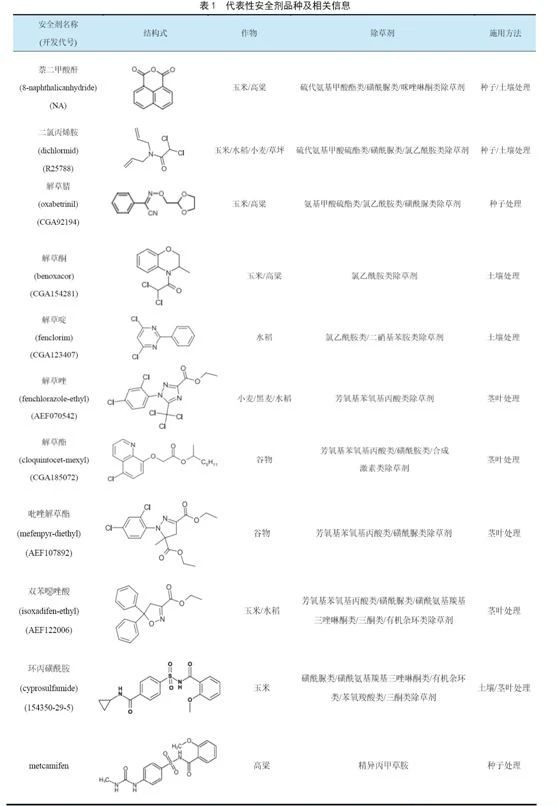Research progress of herbicide safety agents
01 Development history of herbicide safety agents
In 1947, after spraying 2, 4-dichlorophenoxyacetic acid, OttoHoffman found that 2, 4-dichlorophenoxyacetic acid vapor caused drug damage to tomatoes, but after spraying 2,4, 6-trichlorophenoxyacetic acid, tomatoes did not show drug damage symptoms. Hoffman discovered this effect of herbicides and began researching compounds that could protect crops from herbicides. He introduced "herbicide antidotes" to describe such compounds, but in medicine, antidotes are used to treat human poisoning, and "herbicide antidotes" can only prevent drug damage but not treat drug damage that has already occurred, so the concept has been questioned by many. Therefore, the "herbicide safety agent" was born and gradually recognized by the industry.
The first commercial herbicide safety agent, 1, 8-naphthalene dicarboxylic anhydride (NA), was successfully developed in 1969. NA can protect corn and sorghum from various herbicides, such as ethersulfuron, benzsulfuron and sulfsulfuron. The second herbicide safety agent, dichlormid, was synthesized in 1972 by the American Stauf Petrochemical Company (now Syngenta). Dichloroallylamine can protect corn, rice, wheat and lawn from acetochlor, butachlor, metolachlor and wormwood. In 1973, the first commercial herbicide variety Eradicane (Hemicardium + dichloropropylamine), a combination of herbicide and safety agent, was introduced.
Subsequently, the development and utilization of herbicide safety agents has attracted the attention and attention of scientific and technological powers such as the United States, Germany, Japan, Russia and Canada. The creation, application technology exploration and mechanism research of new herbicide safety agents have developed rapidly, and safety agents such as chloroxanil, chloroxanone, chloroxane, dibenzoxazolic acid and cyclopropanesulfonamide have been successively developed and promoted. At present, more than 30 herbicide safety agents and their commercial compositions with herbicides have been put into practical application to protect rice, wheat, corn, sorghum and other graminiferae crops, soybean, cotton and other broadleaf crops.
02 Classification of herbicide safety agents
The development and application of herbicide safety agents have become an indispensable part of herbicide research. In 2011, about 30 percent of herbicide products used in corn and grain fields contained safety agents, and about 6 percent of herbicides used in rice fields included safety agents. The market share of 80% safety agents is occupied by four agrochemical giants: Bayer, BASF, Syngenta and Codihua.
According to the mechanism and mode of action, safety agents can be divided into decomposition type, combination type, compensation type and antagonistic type. Decomposing safety agents can break down herbicides or herbicide toxic products and make them inactive. Binding safety agents can be combined with herbicides or their toxic products to reduce or eliminate herbicide damage to crops. Compensatory safety agents need to be artificially supplied to reduce or eliminate the damage caused by the use of herbicides resulting in the deficiency of a particular nutrient in the crop. Antagonistic safety agents, some herbicides mixed or mixed antagonistic effect, is the basis of antagonistic safety agents research and development.
Classification according to the structure of herbicide safety compounds, There are two common types of chlorine acetamide (dichloroacetamides), carboxylic acid derivatives (carboxylicacidderivatives), oxime ethers (oximeethers), three Azole (triazoles), thiazole pyrazole carboxylic acid (thiazoliumcarboxylicacids), two hydrogen dicarboxylic acid (dihydropyrazoledicarboxylicacids), two different pbo carboxylic acid hydrogen class (dihydroisoxazolecarbo xylicacids, arylsulfonylbenzamides, heterocycles, etc. The representative varieties and related information are shown in Table 1.





